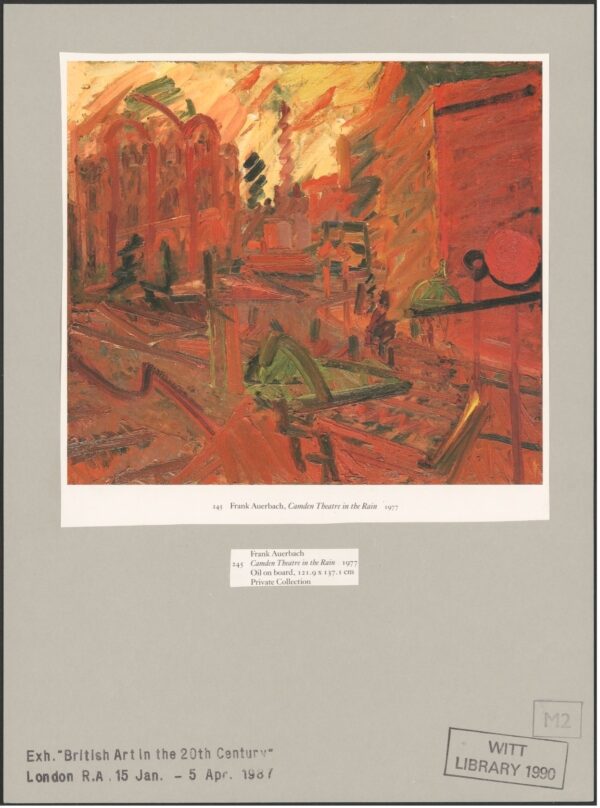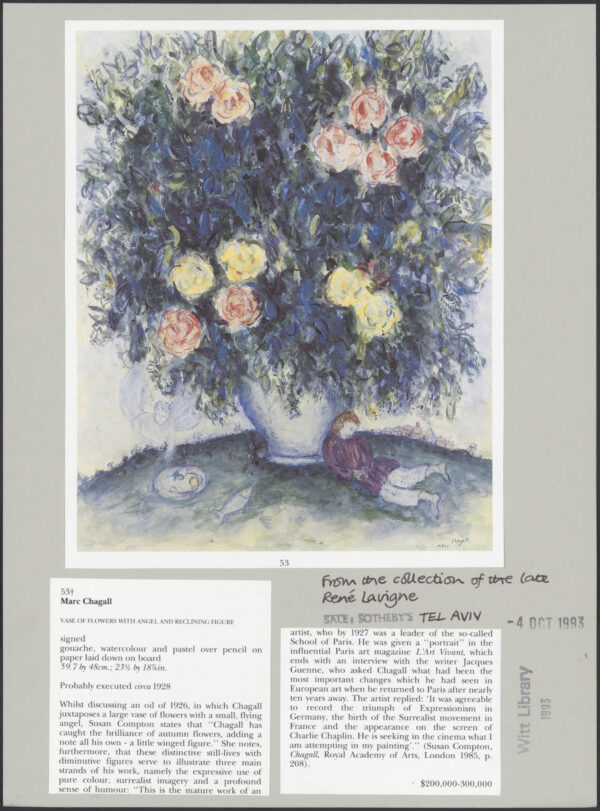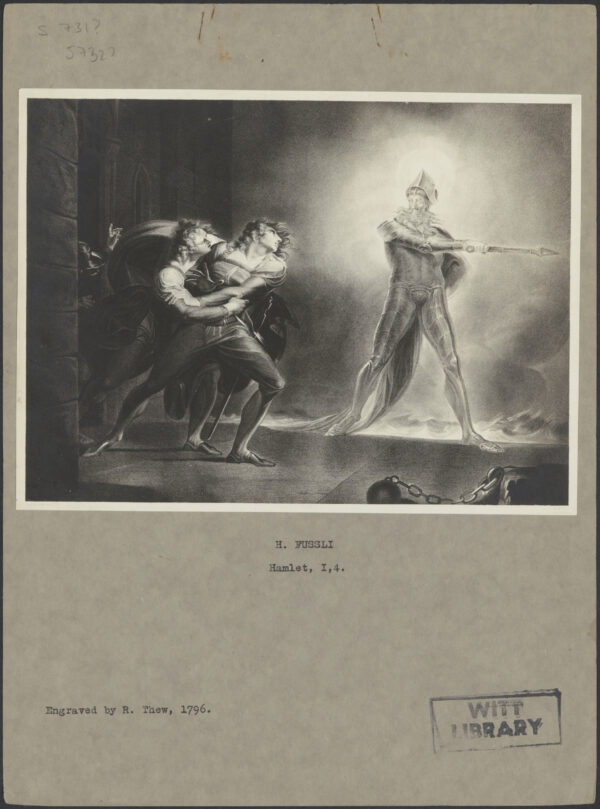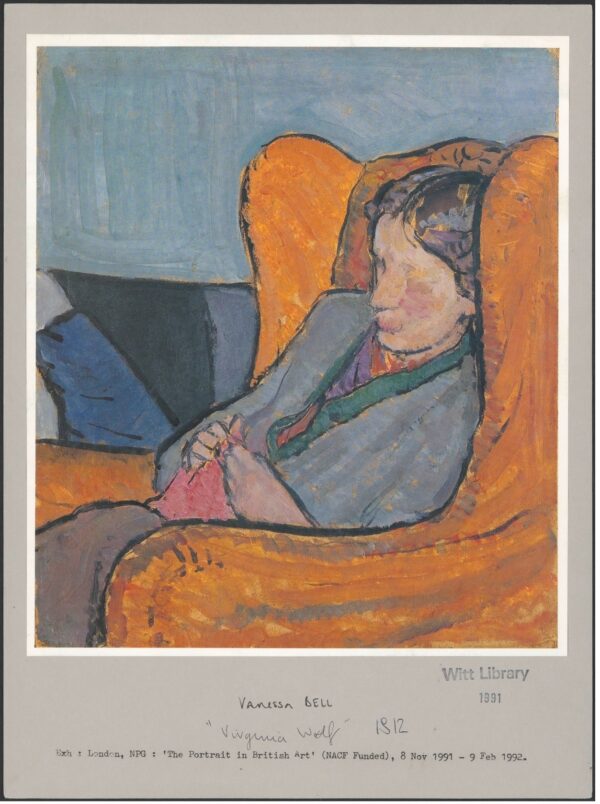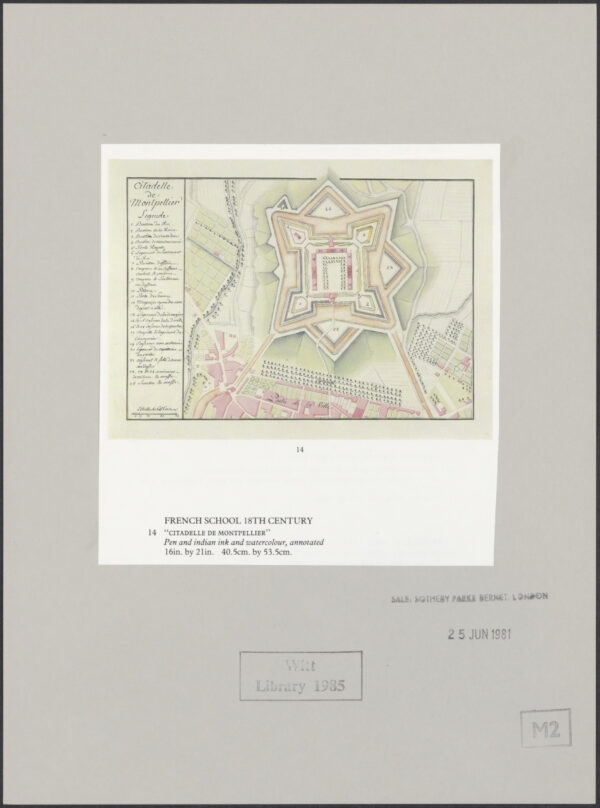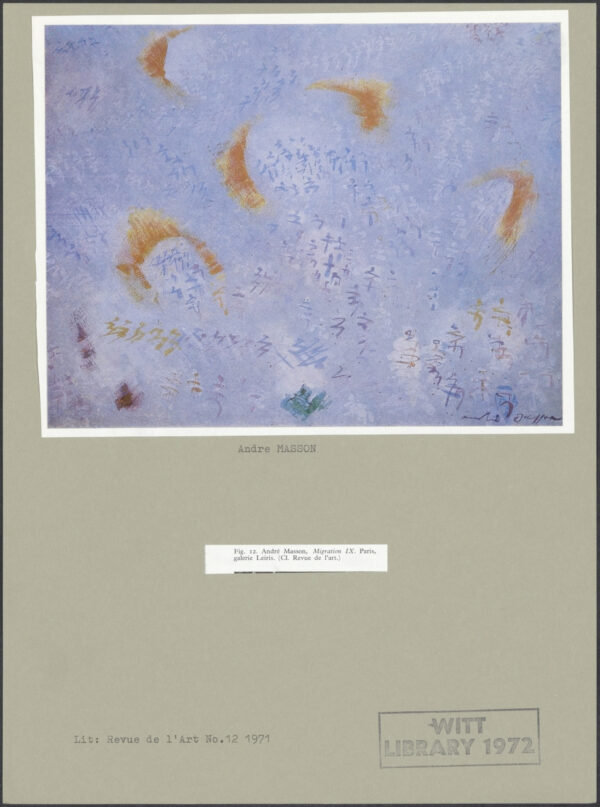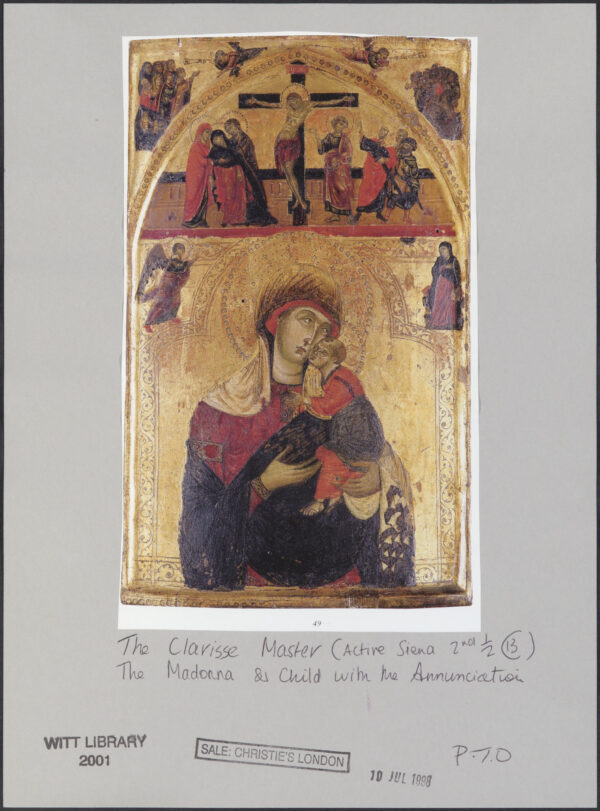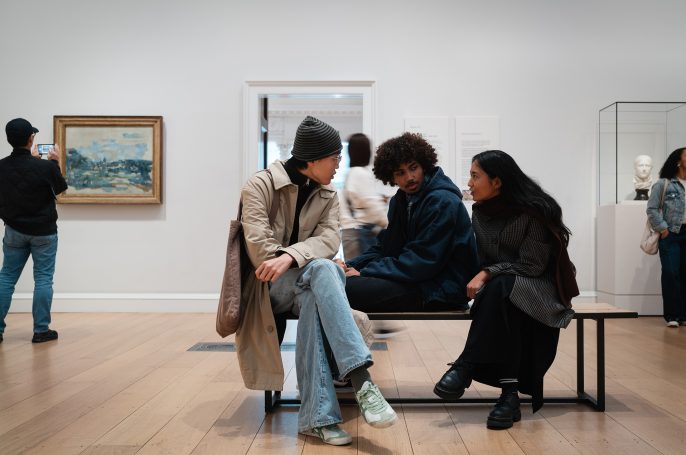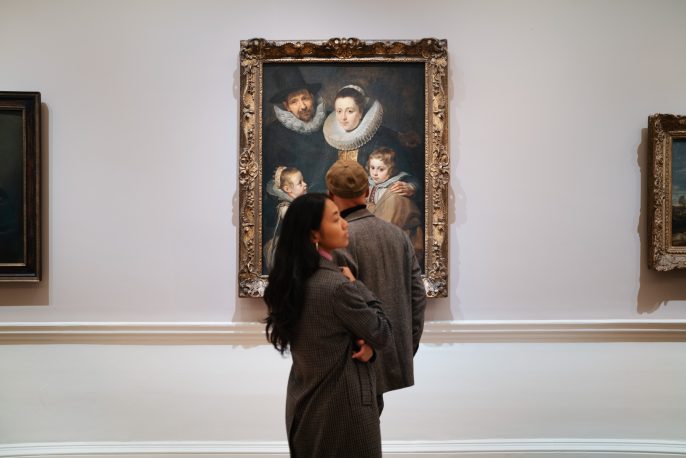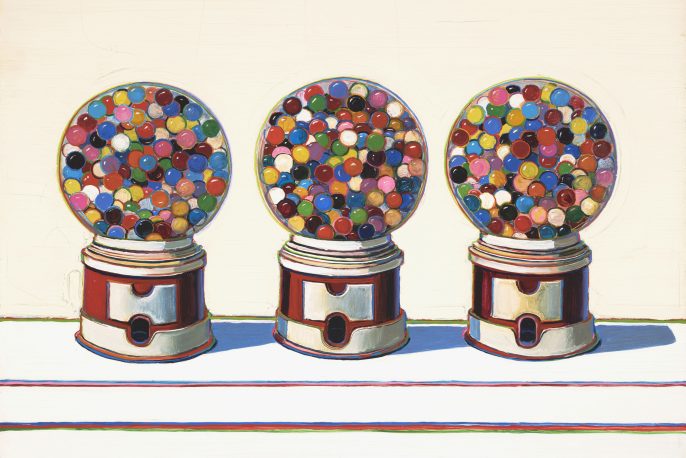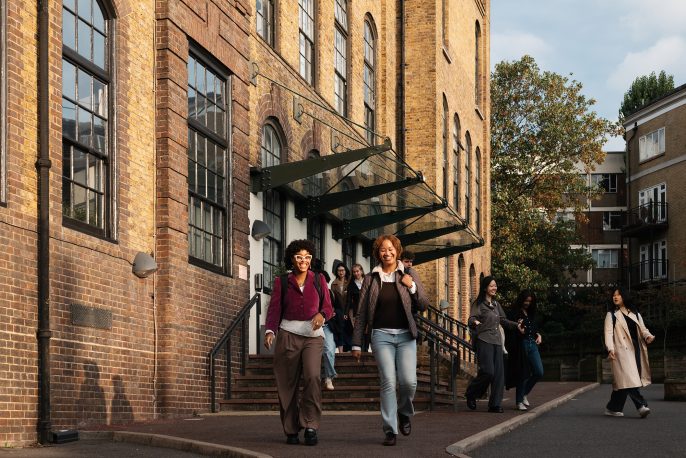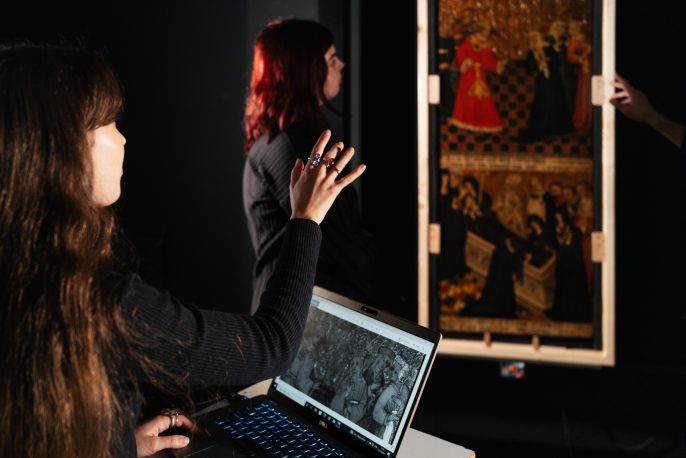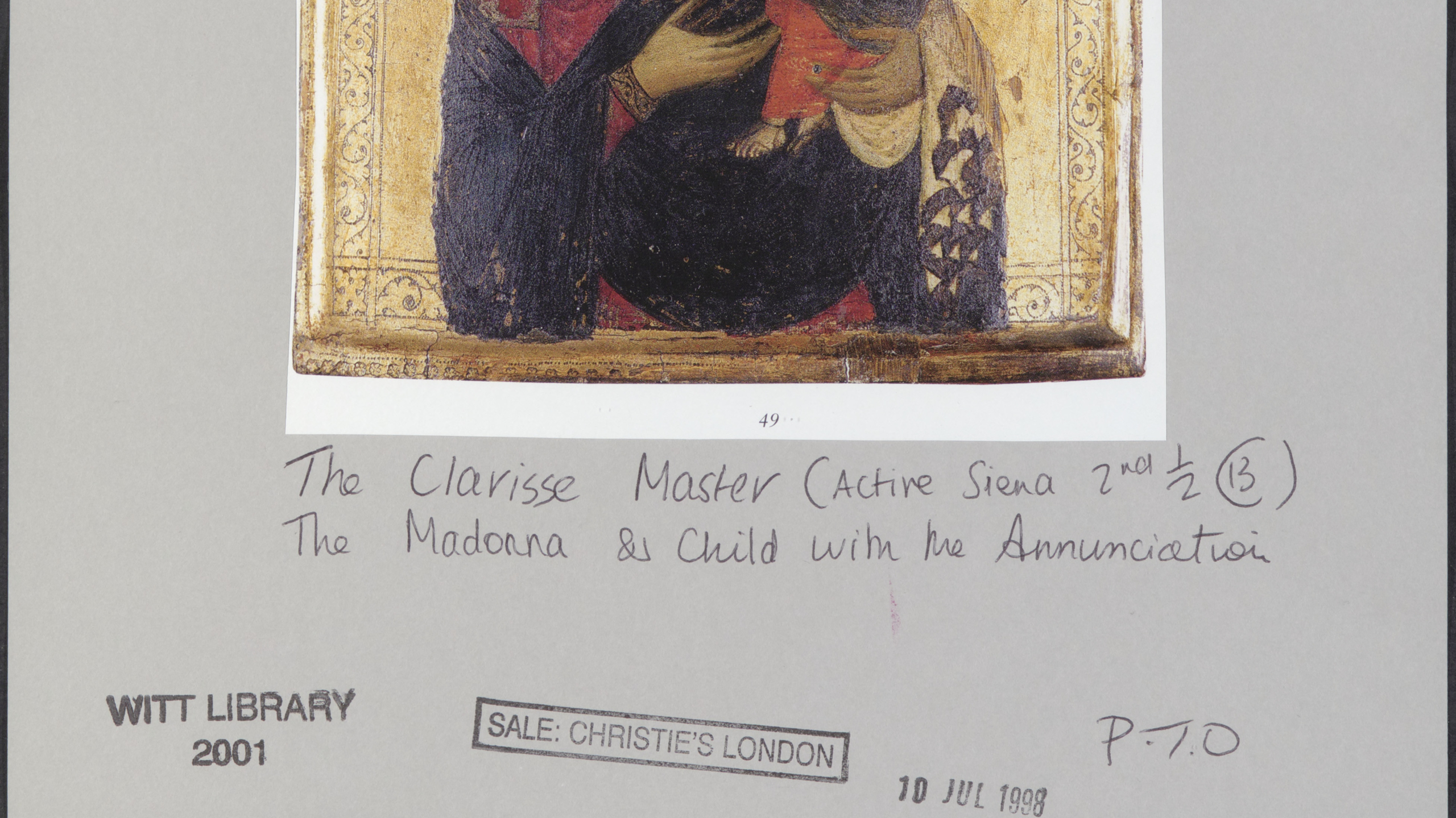
News Archive 2025
The Courtauld completes major project to digitise the Witt Library
Over two million images of Western art spanning eight centuries have been digitised and published online for the public to explore for free
Explore the collection: https://photocollections.courtauld.ac.uk/witt-library
The Courtauld Institute of Art has completed a major eighteen-month project to open up its internationally renowned Witt Photographic Collection, making over two million images available for the public to explore for free on The Courtauld website.
The Witt Photographic Collection is an immense collection of photographs, reproductions and cuttings of Western Art from the 13th century to the present day, and is one of the largest museum photographic collections of its type in the world. It is an invaluable resource for students, researchers, art trade professionals and members of the public.
Previously stored at The Courtauld in the North Wing at Somerset House in over 19,000 boxes and occupying 1.4 kilometres of shelf space, The Witt Photographic Collection includes works from 26 different national ‘schools’ of art, categorised by artist and by subject matter. Its photographic sources range from saleroom catalogues, books, newspapers, and periodicals, to original photographs and prints.
The entire Witt Photographic Collection was relocated from Somerset House to the Netherlands in late 2023, with Picturae BV contracted to complete the digitisation project.
The completion of the Witt digitisation project draws on The Courtauld’s long history of digital scholarship, including a major five-year project to open up its internationally renowned Conway Library photography collection to the public for free in 2023. 14,000 volunteers digitised over one million images from The Conway Library as part of the biggest public inclusion project in The Courtauld’s history. The Courtauld Gallery’s collection online was also launched in 2023, which comprises over 33,000 objects ranging from the Middle Ages to the 21st century, available to explore for free.
Founded in the 1890s by art historian Sir Robert Witt, one of the co-founders of The Courtauld, the collection began during his undergraduate years at Oxford while specialising in the Italian Renaissance. The collection expanded significantly in 1899 following his marriage to Mary, a fellow collector of photographs of Western art. The collection was acquired by The Courtauld in 1944 through a deed of gift.
Beyond art history, the photographic reproductions serve as a rich reference for those studying historical costume, social customs, topography and family history. The Witt Library features regularly as a location and reference source on BBC’s Fake or Fortune.
The digitisation project introduces new audiences to this remarkable collection, opening it up to new questions and insights. The entire collection is now available in the form of high-resolution images, making the library easier to use as a tool for research and education.
Professor Mark Hallett, Märit Rausing Director of The Courtauld, said: “I am delighted that this monumental project to digitise the Witt Photographic Collection has been completed. The Courtauld has a long history of digital collections scholarship and is committed to opening up the study of art history to an international audience. The digitisation of the Witt will ensure that our rich photographic archive is accessible to scholars and the public for generations to come.”
Tom Bilson, Head of Digital Media at The Courtauld and Director of the digitisation project, said: “The Witt has consistently been a pioneer in digital projects within the humanities. The vision to make this rich resource available online has never wavered. It serves not just the art history and trade communities, but also supports research in areas such as topography, costume, genealogy, and natural history. Having published the collection in browsable form, following national schools, artist names, box titles, and folder titles, our next steps will be to transcribe information on the images themselves and add keywords, enabling the Witt to be searched by titles, subject matter and concepts.”
Highlights
